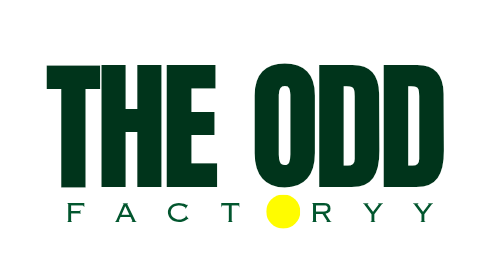What is a Fashion Mood Board?
A fashion mood board is a visual tool that captures the essence, theme, and style of a fashion project. Designers and brands use mood boards to communicate the feel and direction of their collections. These boards can include a variety of elements such as images, colors, textures, and patterns, all combined to inspire and guide the creative process.
Whether you’re creating a mood board of fashion for a new clothing line or looking to conceptualize a seasonal trend, these collages are foundational in translating conceptual ideas into tangible designs. They can be physical boards with pasted items or a digital fashion mood board created using online tools.

 Tools for Creating Mood Boards
Tools for Creating Mood Boards

- Physical Boards: Using corkboards or foam boards with pinned elements.
- Digital Tools: Software like Photoshop, Canva, or dedicated mood board apps like Milanote and Moodboard Lite.
- Collage Techniques: Both physical and digital collages can blend images, textures, and text to create a compelling mood board
Our Success
10+
Countries Delivered
50+
Fashion Creators Empowered
12+
Industry Experience
 How to Create a Fashion Moodboard?
How to Create a Fashion Moodboard?

Creating a fashion mood board is an intuitive and creative process, designed to bring out the best in your fashion vision. Here’s a simple guide to help you get started:
- Gather Inspiration: Start by collecting images, fabric swatches, color palettes, and any other materials that inspire you.
- Select a Theme: Define what your board is about. Is it for a new clothing brand mood board, a seasonal collection, or a specific fashion show?
- Add Textures and Fabrics: Incorporate samples of fabrics and other textures to give a tactile sense of your designs. This helps in visualizing how the final pieces will feel.
- Choose a Format: Decide whether you want a physical board or a fashion mood board online. Each has its benefits, depending on your needs and working style.
- Choose a Color Palette: Select colors that will define the mood and atmosphere of your collection. This step is crucial as it sets the tone for your designs.
- Arrange and Edit: Place your elements on the board. Experiment with layout and composition until you find a harmonious arrangement that speaks to your theme.
- Refine and Finalize: Make final adjustments to ensure your mood board is cohesive and clearly communicates your vision
 Importance in the Fashion Industry
Importance in the Fashion Industry

Fashion mood boards are crucial in the fashion industry for several reasons:
- Visual Communication: They help designers articulate their vision to their team, collaborators, and clients.
- Consistency: Mood boards ensure that everyone involved in a project is aligned with the same aesthetic and design goals.
- Inspiration: They serve as a constant source of inspiration throughout the design process.
- Decision Making: Mood boards help in refining ideas and making critical decisions about fabrics, colors, and styles before actual production begins
 Fashion Mood Board Creation: Step-by-Step Process
Fashion Mood Board Creation: Step-by-Step Process

Creating a fashion mood board can be a structured process that enhances your creative output. Here’s a step-by-step guide to creating an effective fashion mood board:
- Identify the Purpose: Understand what you want to achieve with your mood board. Is it for a new collection, a marketing campaign, or brand repositioning?
- Theme Identification: Start by identifying your collection’s theme or main idea. This could range from a specific era in fashion to an abstract concept like “freedom” or “movement.”
- Color Palette Selection: Choose a color scheme that fits your theme. This step is crucial as it sets the mood for your entire collection.
- Collect Materials: Source images, text, and samples that reflect your vision. This can include photographs, magazine cutouts, and digital images for a digital fashion mood board.
- Create a Palette: Select a color scheme that represents the mood you want to convey. This is especially crucial for a clothing brand mood board where color can tell a powerful story.
- Layout and Design: Arrange your materials on your chosen platform. Balance the elements to create visual harmony.
- Annotate: Add notes or labels if necessary to explain certain elements or ideas on your mood board.
- Iterate: Review and adjust your mood board until it perfectly encapsulates your vision.
 Different Types of Mood Boards
Different Types of Mood Boards

Mood boards can vary greatly depending on their purpose and the medium used. Here are a few types:
- Physical Mood Boards: Created on large boards where physical elements are pasted. Ideal for tactile and detailed exploration.
- Digital Mood Boards: Utilize software and online platforms to create a fashion mood board online. These are more flexible and easily shareable.
- Conceptual Mood Boards: Focus on abstract themes and emotions rather than specific items.
- Presentation Mood Boards: Designed to present to clients or stakeholders, often with annotations and clear narratives.
 Components of a Fashion Mood Board
Components of a Fashion Mood Board

A well-constructed fashion mood board includes several key components:
- Colors: Palette choices that set the mood and style of the collection.
- Textures: Samples of fabrics or images of textures that will be used in the designs.
- Images: Photographs and illustrations that inspire and inform the aesthetic direction.
- Words: Sometimes, key words or phrases are included to describe the mood or theme.
- Patterns: Prints and patterns that will feature in the fashion designs.
 Importance of Fashion Mood Boards
Importance of Fashion Mood Boards

Fashion mood boards are not just creative tools but also strategic assets in the design process. They:
- Facilitate Communication: Provide a clear and visual way to communicate ideas with team members and clients.
- Drive Creativity: Encourage exploration and experimentation in the early stages of design.
- Guide Production: Serve as a reference point throughout the production process, ensuring the final product remains true to the initial vision.
 DIGITAL VS. PHYSICAL MOOD BOARD
DIGITAL VS. PHYSICAL MOOD BOARD

Both digital and physical mood boards have their place in fashion design.
- Physical Mood Boards: Allow for a tactile experience, which is crucial when dealing with textures and fabrics. They are also more engaging in a live collaborative setting.
- Digital Mood Boards: Are more versatile and accessible. They can be edited easily and shared instantly, making them ideal for teams that work remotely. Tools for creating a fashion mood board online are increasingly sophisticated, allowing for dynamic and multimedia boards.
 The Role of Mood Boards in Fashion Design
The Role of Mood Boards in Fashion Design

Mood boards are not just about pasting pictures; they are a critical step in translating inspiration into tangible fashion pieces. They help designers to visualize and communicate their ideas, experiment with different aesthetics, and ensure that the final creations resonate with their initial vision.
By using mood boards, designers at The ODD Factory ensure that every collection has a strong, cohesive identity that aligns with our creative vision and meets the expectations of our discerning clientele.




